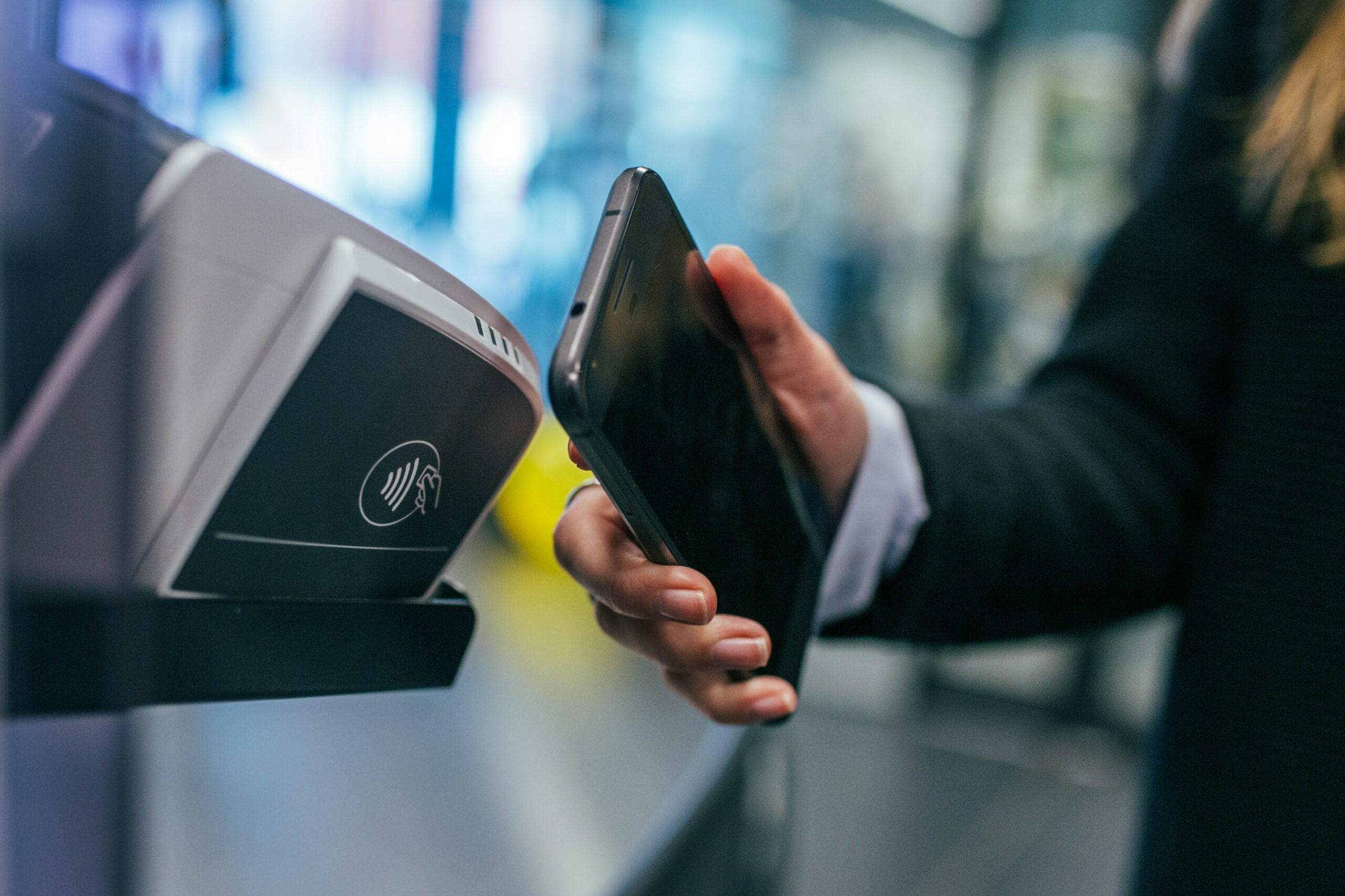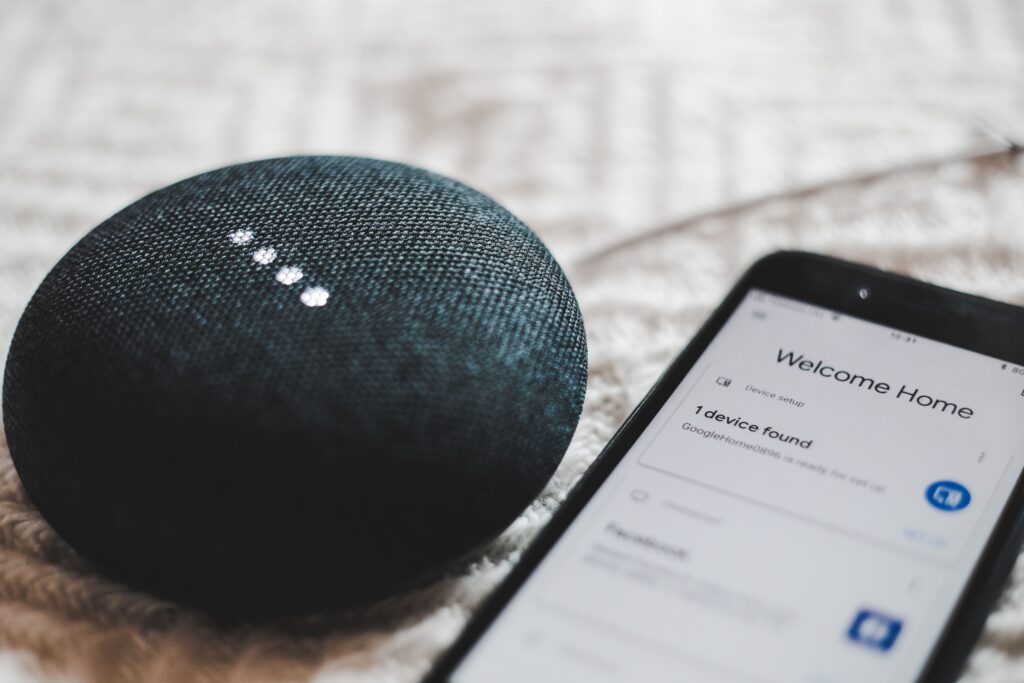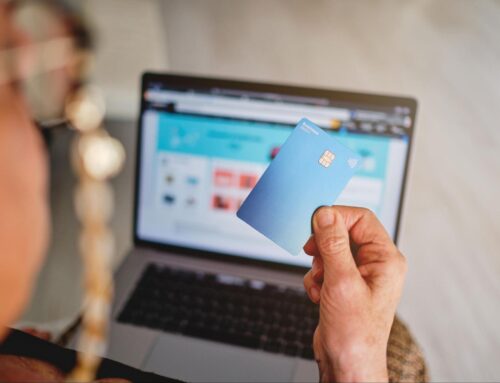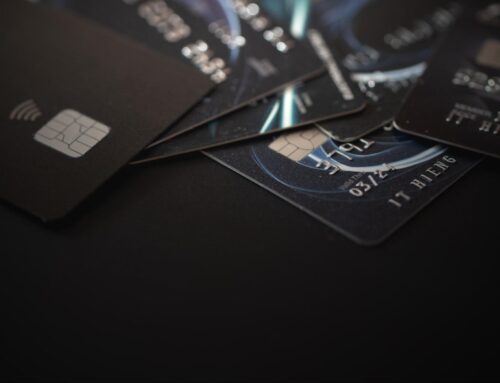BLOGS
How Does NFC Work and What Can You Do With It?

Ever wondered how you can pay for your coffee with just a tap of your smartphone or how your smartwatch can unlock your front door? The answer lies in the power of Near Field Communication (NFC) technology, which has become increasingly prevalent in our daily lives. Let’s dive into the world of NFC and explore its numerous applications, how it works, and what the future holds for this versatile technology.
Key Takeaways
- Near Field Communication (NFC) is a short-range wireless technology used for contactless payments, mobile ticketing, access control and information sharing.
- NFC consists of an enabled device and tag/reader to facilitate communication with secure data storage & transfer across applications.
- Benefits include digital identification, smart home automation, mobile payments & improved customer experience through Vector Payments terminals.
Understanding Near Field Communication Technology
Near Field Communication (NFC) is a short-range wireless technology that enables communication between devices and is based on Radio Frequency Identification (RFID) technology. From mobile payments to digital identification, NFC has transformed the way we interact with everyday objects and electronic devices. NFC technology can be found in:
- smartphones
- wearables
- payment terminals
- soccer balls like the Adidas Telstar 18, which contains an NFC chip that allows users to interact with the ball through their smartphone.
NFC operates at a frequency of 13.56 MHz within the globally available unlicensed radio frequency ISM band, in accordance with the ISO/IEC 18000-3 air interface standard. The NFC Forum, a non-profit industry association, promotes the use of NFC in consumer electronics, mobile devices, and PCs.
With a limited range of just a few inches, NFC is commonly used for:
- contactless payments with credit and debit cards
- mobile ticketing for transportation
- access control for buildings and events
- sharing information between devices with a simple tap
How NFC Works
NFC, based on the principle of magnetic field induction, allows data to be transmitted between two devices, with one functioning as an initiator and the other as a target. This technology has paved the way for the integration of payment cards and security tags into smartphones and smartwatches, creating a seamless experience for users. The NFC data exchange format plays a crucial role in enabling this communication.
For a secure and reliable communication experience, it is necessary for devices to be within two inches or less of the reader, emphasizing the “near” aspect of near field communication. NFC is capable of functioning as both readers and tags, enabling a wide range of uses, from mobile payments to smart home automation.
Components of an NFC System
An NFC system is composed of an NFC-enabled device, such as a smartphone or wearable, and an NFC tag or reader to facilitate communication. This NFC device can interact with NFC tags, which are small stickers that can be programmed with an NFC app, allowing changes to phone settings, texting, app launching, or command execution. In a home setting, NFC tags can be used to conveniently turn out the lights, lock the doors, play music, and set timers.
NFC readers, on the other hand, are powered devices that have their own NFC coil, such as a smartphone or tablet. These nfc reader devices can create an electromagnetic field using their battery, powering any tag brought into their vicinity. This seamless interaction between NFC-enabled devices and tags allows for:
- Secure data storage
- Transfer across various applications
- Mobile payments
- Digital identification
NFC-Enabled Devices and Compatibility
The majority of current smartphones, wearables, and other devices are outfitted with NFC technology. Since the iPhone 5S in 2014, all iPhone models (6 and up) have been equipped with NFC hardware, while most mid-range and premium Android models also support NFC.
To check if your device has NFC capabilities, navigate to the Settings app and look for NFC under the “Connected Devices” or “Network and Sharing” sub-menus. With the growing adoption of NFC in modern smartphones and wearables, users can now enjoy the convenience and security of contactless payments, smart home automation, and digital identification at their fingertips.
Diverse Applications of NFC
NFC boasts a plethora of uses, altering how we interact with our surrounding world. Some of the key uses of NFC technology include:
- Mobile payments
- Smart home automation
- Digital identification
- Security
NFC technology, with its nfc support, has made our lives more convenient and secure.
The applications of NFC are diverse. They include:
- Social networking
- Contact information sharing
- Message exchanging
- Online forum access
- Photo, video, and file connectivity
- Multiplayer mobile gaming
Additionally, NFC is being used to revolutionize transit fare cards, enabling users to quickly reload their fare cards using the NFC chip on their phone.
Mobile Payments and Digital Wallets
NFC enables secure and convenient NFC mobile payments through digital wallets like Apple Pay, Google Pay, and Samsung Pay. These mobile payment apps leverage NFC technology to simulate a contactless debit or credit card, allowing your smartphone to make purchases at NFC-enabled payment terminals.
Hold your phone or watch near the payment terminal to make a mobile payment with NFC. Follow the instructions on the screen to complete the transaction. For smartphones, authentication is required, usually via password or biometric feature. Smartwatches, however, typically don’t require this extra step, as they can detect that the watch is still being worn and has already been unlocked.
Smart Home and Automation

NFC can be used for smart home automation by:
- Pairing devices and using NFC tags to control various functions and settings
- Turning lights on and off
- Controlling heating systems
- Opening garage doors
Imagine being able to do all of this with just a tap of your smartphone or wearable device, using Android Beam.
In addition to controlling smart home devices, NFC tags can also be used to:
- Grant visitors access to your Wi-Fi, eliminating the need to share your password verbally or write it down
- Automate tasks and routines in your home
- Trigger specific actions or settings when you tap your phone on a tag
- Connect and interact with other smart devices in your home
With the integration of NFC technology in smart home automation, our living spaces are becoming more connected and efficient.
Digital Identification and Security
Digital identification and security applications of NFC include digital ID cards, access tokens, and two-factor authentication using physical security keys. NFC technology is an extremely secure form of data storage, capable of keeping sensitive information such us debit and credit card details, loyalty program data, PINs, networking contacts and much more safe. It can be used to store a variety of personal data securely..
Utilizing NFC for digital identification allows users to store digital driver’s licenses and state ID documents on their smartphones, paving the way for a more convenient and efficient identification process. Furthermore, NFC is used in contactless ticketing systems for public transportation, allowing passengers to make quick and easy payments without having to use physical tickets or cards.
Comparing NFC with Other Wireless Technologies
NFC is often compared to other wireless technologies like Bluetooth, RFID, and UWB, with each having its own advantages and limitations depending on the use case. For example, NFC has a limited range of less than 4 cm, making it ideal for secure and private transactions, while Bluetooth can reach up to 10 meters, allowing for greater connectivity between devices.
While NFC and RFID share similarities, NFC is an enhanced version of RFID that offers additional features and increased security. Furthermore, integrating NFC technology with other wireless technologies like UWB (Ultra-Wideband) can offer a range of benefits, such as extending the range and accuracy of NFC-enabled contactless solutions, making it particularly useful in applications such as digital keys.
Ensuring Security and Privacy with NFC
Encryption, tokenization, and biometric authentication are methods through which NFC guarantees security and privacy, solidifying its position as a secure choice for sensitive data transfer and transactions. Data in an NFC transaction is encrypted and dynamic, providing a high level of security for mobile payments.
Digital wallets like Apple Pay and Google Pay utilize tokenization and biometric authentication, such as Touch ID or Face ID, to ensure secure transactions. As a result, NFC technology offers a fast, secure, and convenient payment option that eliminates the need for physical contact or swiping cards.
Implementing NFC in Your Business
Businesses can implement NFC technology by using NFC-enabled payment terminals and devices, offering customers a fast, secure, and convenient payment option. By embracing NFC payments, businesses can benefit from increased security, speed, and ease of use, ultimately improving the overall customer experience.
Setting up an NFC terminal with a provider like Vector Payments involves the following steps:
- Open a merchant account.
- Choose a countertop terminal with EMV and NFC capabilities.
- Install the terminal according to the instructions provided.
- Test the NFC functionality for proper operation.
- Begin accepting NFC payments from customers.
The Future of NFC and Emerging Trends
The future of NFC includes emerging trends like digital driver’s licenses, contactless ticketing, and integration with other wireless technologies like UWB for improved functionality. Market research suggests that the global NFC market is expected to grow at a significant rate, with estimates ranging from a CAGR of 14.2% to 23.48%.
As NFC technology continues to evolve and integrate with other wireless technologies, we can expect to see even more innovative applications and use cases, transforming the way we interact with our surroundings and enhancing our daily lives.
Vector Payments for your NFC Terminal
For businesses looking to accept contactless payments and take advantage of the benefits of NFC technology, Vector Payments offers NFC-enabled payment terminals and solutions. By implementing NFC technology, businesses can provide their customers with a fast, secure, and convenient payment experience that adapts to the increasing demand for contactless transactions. Contact Vector Payments today to learn how you can partner in the world of NFC technology and transactions for your business.
Summary
In conclusion, NFC technology has transformed the way we interact with the world around us, offering a wide range of applications from mobile payments and smart home automation to digital identification and security. With the growing adoption of NFC technology in modern devices and the integration with other wireless technologies, the future of NFC is undoubtedly promising and full of possibilities. It’s time to embrace the power of NFC and unlock the potential it holds for enhancing our daily lives.
Frequently Asked Questions
How can I get NFC on my Android phone?
To get NFC on your Android phone, open the Settings app, go to Connections, tap NFC and contactless payments, switch it on and select your preferred mobile payment service. Follow the on-screen instructions to finish setting up contactless payments.
What is NFC in iPhone?
NFC (Near-field communication) is a technology in iPhones that allows for wireless communication between devices within a few centimeters of each other. It is commonly used for contactless payment methods, such as Apple Pay, as well as for sharing information and connecting to NFC-enabled devices, like speakers or printers.
What is the difference between WIFI and NFC?
NFC enables contactless communication between two devices, while Wifi is a radio frequency that allows long range data transfer and communication. NFC can read RFID chips, but cannot send data back, while Wifi provides a means of sending and receiving data.
How does NFC work?
NFC technology works by utilizing magnetic field induction to wirelessly transmit data between two devices. One device acts as an initiator, while the other functions as a target.
What devices are compatible with NFC?
Modern smartphones, wearables and other devices come equipped with NFC technology for easy communication and data transfer.















